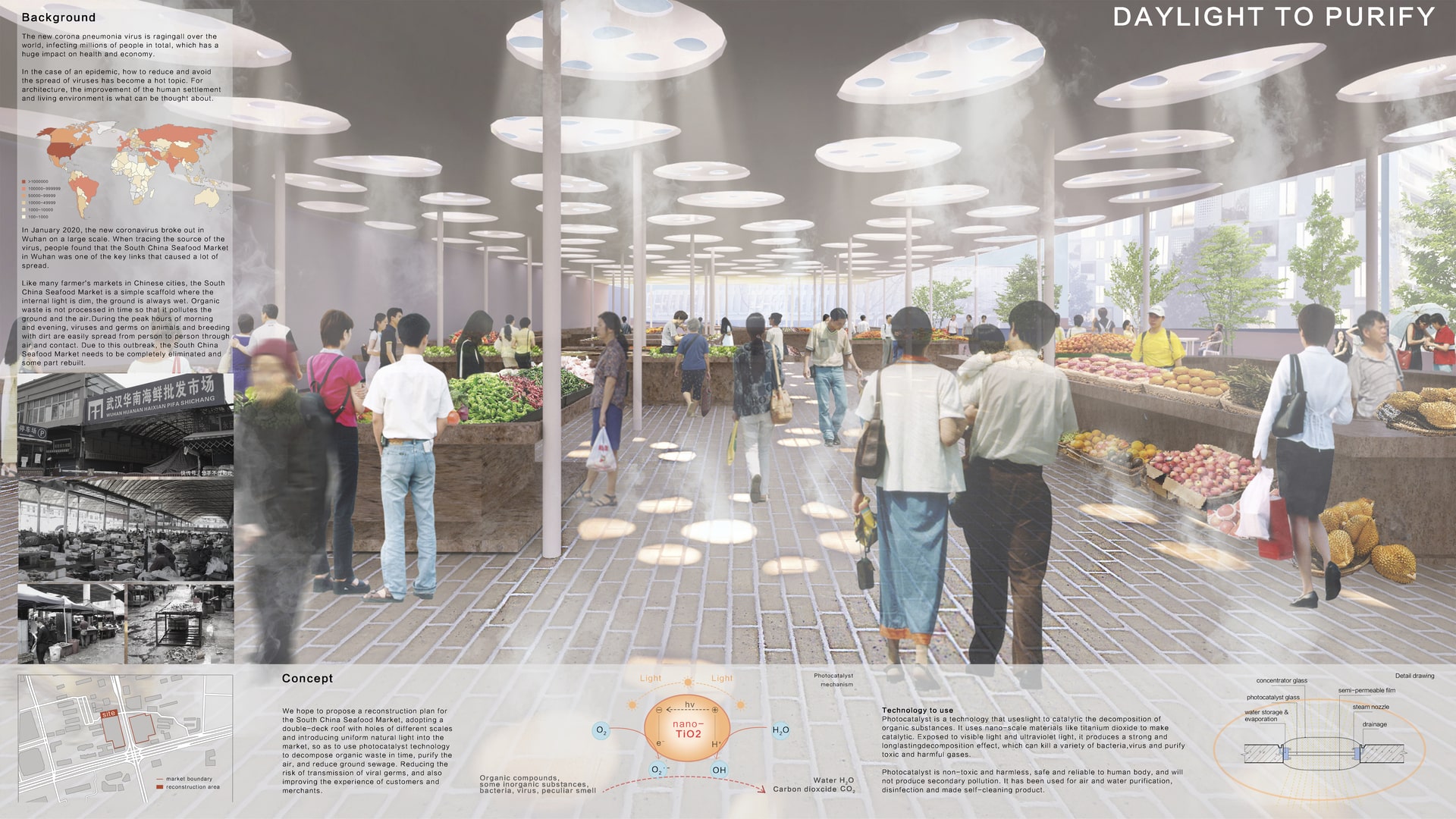Project Description
The new corona pneumonia virus is ragingall over the world, infecting millions of people in total, which has a huge impact on health and economy. In the case of an epidemic, how to reduce and avoid the spread of viruses has become a hot topic. For architecture, the improvement of the human settlement and living environment is what we need to think about. In January 2020, the new coronavirus broke out in Wuhan on a large scale. When tracing the source of the virus, people found that the South China Seafood Market in Wuhan was one of the key links that caused a lot of spread. Like many farmer's markets in Chinese cities, the South China Seafood Market is a simple scaffold where the internal light is dim, the ground is always wet. Organic waste is not processed in time so that it pollutes the ground and the air.During the peak hours of morning and evening, viruses and germs on animals and breeding with dirt are easily spread from person to person through air and contact. Due to this outbreak, the South China Seafood Market needs to be completely eliminated and some part rebuilt. Photocatalyst is a technology that uses light to catalytic the decomposition of organic substances. Exposed to visible light and ultraviolet light, it produces a strong and longlasting decomposition effect, which can kill a variety of bacteria,virus and purify toxic and harmful gases. It is non-toxic and harmless, safe and reliable to human body, and will not produce secondary pollution which has been used for air and water purification, disinfection and made self-cleaning product. We hope to propose a reconstruction plan for the South China Seafood Market, adopting a double-deck roof with holes of different scales and introducing uniform natural light into the market, so as to use photocatalyst technology to decompose organic waste in time, purify the air, and reduce ground sewage. Reducing the risk of transmission of viral germs, and also improving the experience of customers and merchants.
